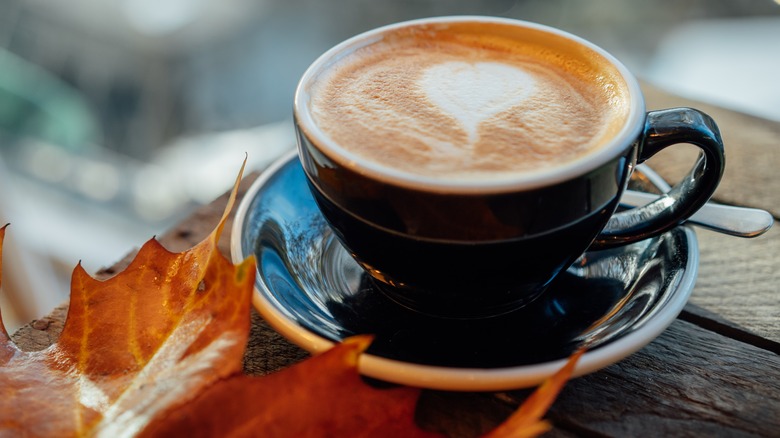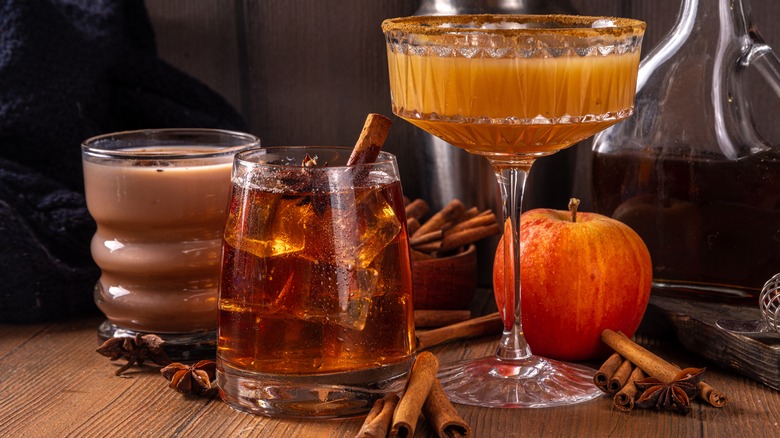Maple Syrup Is The Slept-On Sweetener For Cozy Fall Drinks
A new favorite fall drink flavoring has arrived to take its place next to pumpkin spice on the menus of coffee shops and bars everywhere — and not only is it deliciously sweet, but it also boasts a variety of beneficial nutrients and minerals that make it a popular natural sugar alternative. Pancake topper, candy base, and nostalgic sticky goodness, maple syrup can be used for so much more, and it's ready to take center stage in sweetening your fall drinks this year.
Maple syrup was first made by the Indigenous people of North America, including the Abenaki, Iroquois, Algonquin, Mi'kmaq, and others, in a labor intensive process that involved cutting a wedge into maple trees, draining the watery syrup into handmade baskets, and slowly boiling it until it thickened. These methods were adopted and adapted by European colonists, and today Canada and the Northeastern U.S. collectively produce approximately 15 million gallons of maple syrup a year. This doesn't include the amount of pancake syrup that North Americans consume annually (think Log Cabin), which typically consists of high fructose corn syrup, water, cellulose gum, caramel color, and artificial flavors — not any actual maple syrup.
But if you have real deal, pure maple syrup is a great natural sweetener for any number of fall drinks, adding a nutty, caramelized touch, as well as adding antioxidants, potassium, calcium, and other beneficial nutrients to every sip.
How to make the coziest fall beverages
First things first: secure your maple syrup. Pancake syrup is much cheaper, with real maple syrup coming in around $40 to $60 a gallon (although it's often sold in pint or quart sizes). But if you want the genuine maple flavor, you may have to spring for the good stuff to give your fall lattes, cocktails, and mocktails a truly cozy touch. Beyond that, think about what intensity of syrup you're looking for – pure maple syrup is labeled by the color and strength of flavor, from golden and delicate to very dark and strong, and two other levels in between. You'll likely want something in the middle, but if you want the maple to pack a real punch, go for the stronger syrup and you'll have it guaranteed.
Once you have your syrup of choice, coffee is a great place to start experimenting with new fall flavors – either brew your coffee as usual and replace your typical sweetener with a tablespoon or two of maple syrup, or stir the maple syrup into your milk and then pour the mixture on top of your latte. When you're ready to try something a little more complex, consider making an old fashioned with maple syrup replacing the simple syrup, or test out this maple cider cocktail recipe.
Many Indigenous people look at maple syrup as a gift from the maple trees to help us get through the winter. So on those bitterly cold mornings or dim winter afternoons, cozy up with a maple latte and consider the way the syrup journeyed from a tree somewhere to flavor your drink — the earth is giving you a sweet gift to get you through the coldest months of the year.

